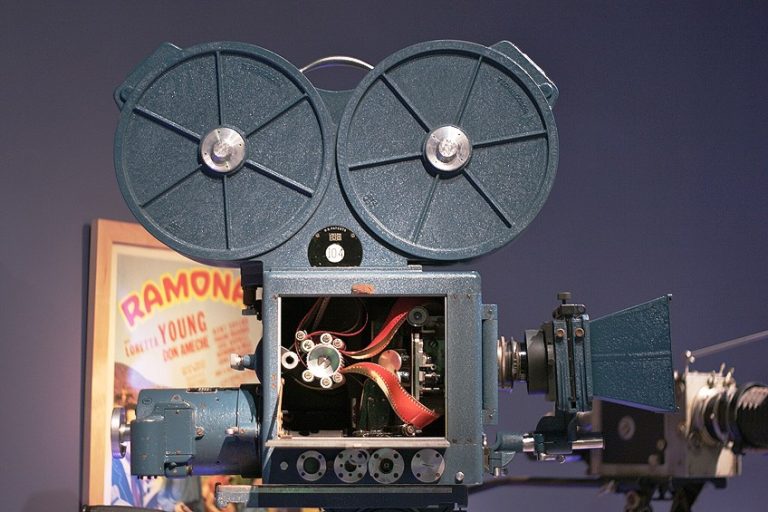Famous Cinematographers – Top 14 Cinematic Craftsmen
Throughout the history of cinema, the role of a cinematographer, otherwise referred to as the Director of Photography (DOP), has been nothing short of magical. These visionary artists possess the unique ability to transform mere frames into unforgettable masterpieces. From capturing the raw essence of a powerful performance to crafting breathtaking visual narratives, famous cinematographers have left a permanent mark on the art of filmmaking. This journey through the realm of the best cinematographers promises to unveil their extraordinary talent and cinematic wizardry, which has shaped the silver screen and inspired generations of filmmakers past, present, and future. Below, we will be looking at these famous cinematographers, and delving into what exactly allows their work to stand apart from their peers.
The Best Cinematographers in Filmmaking History
By taking a deep dive into the annals of filmmaking history, you will find a select group of luminaries that have emerged as the best cinematographers, heralded for their remarkable ability to progress narratives through their mastery of camerawork. These visionary artists, armed with lenses and lighting, sculpt stories with each frame.
They do not just capture scenes, they breathe life into them, infusing emotion, depth, and meaning.
From Gregg Toland’s groundbreaking deep focus in Citizen Kane to Roger Deakins’ poetic visuals in Blade Runner 2049, the best and most famous cinematographers are able to transport their audiences into new realms in order to evoke visceral responses. Their artistry is the alchemy that transforms a mere film into an unforgettable experience.
Sven Nykvist (1922 – 2006)
| Artist Name | Sven Nykvist |
| Nationality | Swedish |
| Place of Birth | Moheda, Sweden |
| Date of Birth and Death | 3 December 1922 – 20 September 2006 |
| First Cinematography Credit | I Mörkaste Småland (1943) |
| Most Acclaimed Work | Cries and Whispers (1974) |
Sven Nykvist, a true luminary in the world of cinematography, has left an indelible legacy in the realm of filmmaking, marked by his extraordinary influence and distinctive style. His cinematography is evidence of the power of visual storytelling, characterized by a unique and deeply emotional approach to capturing the human experience on film. Nykvist’s cinematography is renowned for its ability to convey complex emotions through imagery. His collaborations with director Ingmar Bergman, such as Persona and Fanny and Alexander, showcased his exceptional talent for capturing the inner lives of characters and the subtleties of their interactions.

He often used soft, natural lighting and meticulous framing to create a visual language that perfectly mirrored the emotional depth of the narrative. His work was set apart thanks to his deep commitment to the idea that cinematography should be seen as a language of its own, capable of conveying complex emotions and ideas. He was a pioneer in exploring the relationship between light and shadow, bringing an almost painterly quality to his work.
Nèstor Almendros (1930 – 1992)
| Artist Name | Nèstor Almendros |
| Nationality | Spanish |
| Place of Birth | Barcelona, Spain |
| Date of Birth and Death | 30 October 1930 – 4 March 1992 |
| First Cinematography Credit | Six in Paris (1954) |
| Most Acclaimed Work | Days of Heaven (1978) |
Nèstor Almendros, an iconic figure in the industry, has made an unforgettable impact on the landscape of cinematography and filmmaking since his passing. His cinematography is a testament to the art of visual storytelling, marked by a deep connection to the emotional essence of film. Almendros’ cinematography is characterized by its naturalism and a profound understanding of the interplay between light and shadow. His work on films like Days of Heaven and The Wild Child showcases his ability to capture the beauty of the natural world, often using natural light to create stunning, evocative images.
He believed in the power of simplicity, allowing the environment to become an integral part of the narrative.
What sets his catalog of work apart is his commitment to the idea that cinematography should serve the story and capture the authenticity of human emotion. He was a pioneer of the “cinéma vérité” style, which prioritized realism and a documentary-like approach to storytelling.
Néstor Almendros’ influence on filmmaking is immeasurable. His unique style redefined the visual aesthetic of cinema, encouraging a generation of cinematographers to embrace the beauty of natural light and the authenticity of real environments. His legacy is a reminder of the enduring power of cinematography to evoke emotion and enhance the narrative, making him an enduring inspiration to filmmakers worldwide.
Gordon Willis (1931 – 2014)
| Artist Name | Gordon Willis |
| Nationality | American |
| Place of Birth | Massachusetts, United States |
| Date of Birth and Death | 28 May 1931 – 18 May 2014 |
| First Cinematography Credit | End of the Road (1970) |
| Most Acclaimed Work | The Godfather Part I (1972) |
Often referred to as the “Prince of Darkness,” Gordon Willis is an iconic figure in the world of cinematography, whose influence and unique style is often unmistakable in the world of filmmaking. His work is a masterclass in visual storytelling, defined by his extraordinary use of light and shadow, and his influence on the industry is immeasurable. Willis’ cinematography is characterized by his mastery of low-key lighting, creating a rich, atmospheric, and often mysterious look that perfectly complements the narratives of the films he worked on. His collaborations with directors like Francis Ford Coppola on “The Godfather” trilogy and Woody Allen in films like Annie Hall and Manhattan showcased his ability to elevate storytelling through his visual choices.
His work is set apart through his audacious approach to capturing each scene, as he was unafraid to embrace darkness, allowing shadows to become an integral part of the narrative.
His willingness to challenge convention and embrace minimalism had a profound impact on the industry, influencing a generation of cinematographers who appreciated the subtleties of light and shadow.
Willis’ influence on filmmaking is enduring, as his distinctive style redefined how cinematographers use light and darkness to shape the mood and meaning of a film. His work is a timeless testament to the power of cinematography to evoke emotion and elevate storytelling, and it continues to captivate and inspire filmmakers, reminding us that light and shadow are as crucial to storytelling as the written word.
Vittorio Storaro (1940 – Present)
| Artist Name | Vittorio Storaro |
| Nationality | Italian |
| Place of Birth | Rome, Italy |
| Date of Birth and Death | 24 June 1940 – Present |
| First Cinematography Credit | Invasion of the Normans (1962) |
| Most Acclaimed Work | Apocalypse Now (1979) |
A legendary figure in the realm of cinematography, Vittorio Storaro’s presence can undoubtedly still be felt in films today. His cinematography is a masterful symphony of visual storytelling, marked by a deep understanding of the emotional nuances of film. Storaro’s cinematography is defined by his remarkable use of color and light. His collaborations with director Bernardo Bertolucci, particularly in The Conformist and The Last Emperor, showcased his ability to paint with light, creating strikingly vivid and emotionally resonant visual narratives. He views light and color as essential components of the storytelling process, orchestrating a symphony of visuals that evoke powerful emotions and enhance the narrative.
What sets Storaro apart is his dedication to the idea that cinematography is a fundamental part of the narrative structure.
He developed the concept of “cinematography with meaning,” emphasizing that every visual choice should serve the story. His innovative use of color palettes to convey emotional states, historical eras, and character development has transformed how cinematographers approach their craft.

Storaro’s influence on filmmaking is profound. His groundbreaking work has inspired countless cinematographers to think of their role as not just capturing images but as shaping the very essence of storytelling. His style, marked by a deep connection to the narrative and an innovative approach to light and color, continues to captivate filmmakers and enrich the cinematic experiences. Storaro’s legacy is a timeless testament to the enduring power of cinematography to shape the art of filmmaking.
Roger Deakins (1949 – Present)
| Artist Name | Roger Deakins |
| Nationality | English |
| Place of Birth | Torquay, United Kingdom |
| Date of Birth and Death | 24 May 1949 – Present |
| First Cinematography Credit | Cruel Passion (1977) |
| Most Acclaimed Work | The Shawshank Redemption (1994) |
Roger Deakins stands as a towering figure in the world of cinematography. His work is celebrated as nothing short of masterful. What sets his cinematography style apart from others is a blend of technical brilliance, an unerring eye for detail, and a profound storytelling sensibility. Deakins’s cinematography is not just about creating visually stunning images; it is about weaving those visuals seamlessly into the narrative fabric of a film. His ability to enhance a story’s emotional resonance through light and composition is unparalleled. Take, for instance, the hauntingly beautiful desolation of No Country for Old Men, where Deakins’ use of stark, barren landscapes becomes an integral character in the narrative, reflecting the film’s themes of moral decay and existential dread.
What truly distinguishes Deakins is his versatility.
From the rain-soaked noir of Blade Runner 2049 to the pastoral grandeur of 1917, he adapts his style to suit the unique demands of each project. This chameleon-like ability keeps his work fresh and exciting, setting a standard for cinematographers worldwide.
Deakin’s influence on filmmaking is immeasurable. His work has not only set a gold standard for cinematography, but has also inspired countless aspiring filmmakers to think beyond the visuals and consider how visuals can deepen the audience’s connection to the story. In this, Deakins has left his mark on the art of filmmaking, pushing the boundaries of what is possible with cameras and lighting, while always serving the story first and foremost.
Robert Richardson (1955 – Present)
| Artist Name | Robert Richardson |
| Nationality | American |
| Place of Birth | Massachusetts, United States |
| Date of Birth and Death | 27 August 1955 – Present |
| First Cinematography Credit | An Outpost of Progress (1982) |
| Most Acclaimed Work | Kill Bill (2003 – 2004) |
Robert Richardson is a cinematographer whose works stand as a testament to the artistry and impact of visual storytelling in the world of filmmaking. His influence on the medium and his distinctive style have left a truly unforgettable mark on the industry. Richardson’s cinematography is characterized by a remarkable ability to elevate storytelling through visual aesthetics. His collaborations with directors such as Quentin Tarantino and Oliver Stone have resulted in iconic films such as JFK, Kill Bill, and Inglourious Basterds. His work often features vivid, bold compositions, intricate camera movements, and a profound understanding of the emotional nuances within a narrative.
What sets Richardson apart is his dedication to pushing the boundaries of conventional cinematography.
He embraces a fearless and experimental approach, consistently exploring new techniques and technologies to enhance the visual language of cinema. His work on films like Hugo, where he harnessed 3D technology, showcases his adaptability and forward-thinking vision.

His influence on filmmaking is immeasurable. His pioneering spirit has inspired countless cinematographers to think beyond the traditional and push the envelope of visual storytelling. His style, characterized by his boldness and innovation, has enriched the cinematic experience and continues to captivate audiences worldwide. His legacy serves as a reminder of the enduring power of cinematography in shaping the art of film.
Wally Pfister (1961 – Present)
| Artist Name | Wally Pfister |
| Nationality | American |
| Place of Birth | Chicago, United States |
| Date of Birth and Death | 8 July 1961 – Present |
| First Cinematography Credit | The Unborn (1991) |
| Most Acclaimed Work | Inception (2010) |
Wally Pfister, renowned for his extraordinary contributions to cinematography has carved a distinctive niche for himself in the world of filmmaking. His visual style sets him apart from others in his league through his remarkable ability to blend technical expertise with emotional resonance, creating a rather unique blockbuster experience. Pfister’s cinematography is known for its severe attention to detail and a keen understanding of the emotional core of the narrative. His work on Christopher Nolan’s films, including Inception and The Dark Knight trilogy, showcases his exceptional talent for seamlessly integrating groundbreaking visual effects with compelling storytelling.
Pfister’s use of practical effects, intricate camera work, and a strong emphasis on practical lighting have raised the bar for cinematic realism. His collaborations with Nolan redefined the visual aesthetics of popular cinema, emphasizing practical effects over CGI extravagance. His dedication to pushing the boundaries of what is technically achievable while maintaining a deep connection to the human experience has set a standard that cinematographers around the world strive to achieve.
Emmanuel Lubezki (1964 – Present)
| Artist Name | Emmanuel Lubezki |
| Nationality | Mexican |
| Place of Birth | Mexico City, Mexico |
| Date of Birth and Death | 30 November 1964 – Present |
| First Cinematography Credit | Hora Marcada’s “El motel” (1989) |
| Most Acclaimed Work | The Revenant (2015) |
Emmanuel Lubezki, often affectionately known in the industry as “Chivo,” etched his name into the annals of cinematography history as one of the most unique and influential figures in the craft. What sets his cinematography style apart from others is a fusion of innovation, artistic sensibility, and an unwavering commitment to visual storytelling. Lubezki’s style is characterized by his exceptional use of natural light and extended takes, often creating a seamless and immersive experience for the audience. His collaboration with renowned directors like Alejandro G. Iñárritu and Terrance Malick resulted in breathtaking works like The Revenant and The Tree of Life respectively, where his intimate connection with nature and an ability to capture raw, unfiltered beauty are on full display.
Chivo’s influence on filmmaking has been profound. His unconventional techniques have not only redefined how cinematography can enhance storytelling but have also challenged traditional practices. His long, fluid shots have become iconic, inspiring filmmakers to think beyond the confines of typical shot structures. Lubezki’s legacy lies in his pursuit of visual excellence while embracing the unpredictable and organic elements of filmmaking.
Rodrigo Prieto (1965 – Present)
| Artist Name | Rodrigo Prieto |
| Nationality | Mexican |
| Place of Birth | Mexico City, Mexico |
| Date of Birth and Death | 23 November 1965 – Present |
| First Cinematography Credit | El Jugador (1991) |
| Most Acclaimed Work | The Wolf of Wall Street (2013) |
As a cinematographer of unparalleled skill and artistry, Rodrigo Prieto has left an unmistakable mark on the world of filmmaking. What distinguishes his cinematography style from others is a rare blend of visual innovation, emotional depth, and a commitment to cross-cultural storytelling. Prieto’s cinematography is characterized by a profound sense of visual storytelling. His work on films such as Brokeback Mountain and The Irishman showcases his ability to capture the intricacies of human emotion through composition and lighting. He uses the camera as a tool to explore the emotional landscapes of characters, often creating evocative visual metaphors that deepen the narrative.
His influence of filmmaking is profound and far-reaching. Prieto’s work has not only set a high standard for visual excellence, but also demonstrates a keen interest in cross-cultural collaborations, transcending borders in storytelling. His cinematography speaks a universal language that resonates with audiences across the globe. His willingness to experiment with different genres and storytelling techniques has encouraged other cinematographers to push the boundaries of their craft and style.
Matthew Libatique (1968 – Present)
| Artist Name | Matthew Libatique |
| Nationality | American |
| Place of Birth | Elmhurst, United States |
| Date of Birth and Death | 19 July 1968 – Present |
| First Cinematography Credit | Women: Stories of Passion (1997) |
| Most Acclaimed Work | Requiem for a Dream (2000) |
Matthew Libatique is a cinematographer whose work has made a profound impact on the world of filmmaking, thanks to his distinctive style and influential contributions to the art of visual storytelling. His cinematography is a mesmerizing blend of technical expertise and emotional depth, characterized by an innovative approach to capturing the essence of a story. Libatique’s cinematography stands out for its dynamic and versatile visual language. His work with director Darren Aronofsky on films like Black Swan and Requiem for a Dream showcases his ability to employ a wide range of techniques and aesthetics to match the emotional and narrative needs of each project.
Whether using handheld cameras to convey a sense of intimacy or experimenting with bold color palettes, he consistently pushes the boundaries of cinematic storytelling. He has set himself apart from his peers thanks to his willingness to take risks and embrace new technologies. He’s unafraid to experiment with unconventional angles, camera movements, and lighting setups to create visually striking and emotionally resonant scenes. His work reflects a deep understanding of the power of cinematography to enhance the storytelling experience.
Chung-hoon Chung (1970 – Present)
| Artist Name | Chun-hoon Chung |
| Nationality | South Korean |
| Place of Birth | Seoul, South Korea |
| Date of Birth and Death | 15 June 1970 – Present |
| First Cinematography Credit | Lifestories: Families in Crisis (1994) |
| Most Acclaimed Work | Oldyboy (2003) |
Chung-hoon Chung’s legacy is one of innovation, sophistication, and a deep connection to storytelling through visuals. His influence on cinematography is profound, motivating filmmakers to think outside the frame and pushing the boundaries of what is possible with the camera. His work continues to leave an indelible mark on the industry, shaping the future of visual storytelling. Chung’s cinematography is marked by its meticulous composition and creative use of color and lighting. From the chilling elegance of The Handmaiden to the hauntingly surreal landscapes of Oldboy, his work transcends the conventional and delves into the extraordinary.
Chung’s remarkable versatility allows him to adapt his style to a wide range of genres, offering a fresh perspective on each project.
His influence on filmmaking is significant, as his work challenges the boundaries of traditional cinematography, encouraging a more experimental and visually daring approach. His collaborations with acclaimed director Park Chan-Wook have redefined the visual aesthetics of South Korean cinema and gained international acclaim. Chun’s work has paved the way for the global recognition of South Korean cinema and inspired cinematographers worldwide to explore new realms of creativity.
Hoyte van Hoytema (1971 – Present)
| Artist Name | Hoyte van Hoytema |
| Nationality | Swiss |
| Place of Birth | Horgen, Switzerland |
| Date of Birth and Death | 4 October 1971 – Present |
| First Cinematography Credit | Den Förste Zigenaren I Rymden (2002) |
| Most Acclaimed Work | Interstellar (2014) |
Hoyte van Hoytema, a cinematographer of remarkable vision and versatility, stands as a distinctive force in the world of filmmaking. What sets his cinematography style apart from others is a harmonious blend of innovation, artistic intuition, and a profound connection to the emotional core of storytelling. Hoytema’s cinematography is characterized by its ability to seamlessly transition between genres and moods. From the sweeping grandeur of Dunkirk to the dreamlike intimacy of Her, he adapts his style to the unique demands of each project. His use of practical effects and tactile, in-camera techniques gives his work an authentic, immersive quality, setting it apart from the CGI-heavy norm.
Hoytema’s influence on filmmaking is profound.
He has reinvigorated the concept of practical cinematography, urging filmmakers to rediscover the tactile, tangible aspects of the craft. His penchant for organic, visually striking imagery has set a new standard, encouraging others to prioritize substance over style.
His work challenges traditional conventions, emphasizing that a cinematographer’s role extends far beyond camera operation. Hoytema’s legacy lies in his unwavering dedication to the art of storytelling through visual means, inspiring new generations of filmmakers to elevate their craft from Hollywood magic to pure authenticity.
Bradford Young (1977 – Present)
| Artist Name | Bradford Young |
| Nationality | American |
| Place of Birth | Louisville, United States |
| Date of Birth and Death | 6 July 1977 – Present |
| First Cinematography Credit | Mo (2007) |
| Most Acclaimed Work | Arrival (2016) |
As a cinematographer whose work stands as a testament to his unique artistry, Bradford Young has undoubtedly had a profound impact on the industry, despite his comparably short career. What sets his cinematography style apart from others is a combination of bold visual storytelling, a deep appreciation for cultural nuance, and an unwavering commitment to amplifying the voices of marginalized communities. Young’s cinematography is marked by his masterful use of lighting and shadow, which creates a rich, immersive atmosphere that serves as a character in its own right. His work on films like Arrival and Selma demonstrates an innate ability to convey emotion and depth through imagery, making each frame a compelling narrative in itself.

Beyond his technical prowess, Young’s influence on filmmaking extends into the realms of representation and diversity. As a prominent African American cinematographer, he has shattered glass ceilings and inspired a new generation of underrepresented talent to pursue careers in cinematography. His cinematography becomes a powerful tool for storytelling, reflecting the multifaceted experiences of different cultures and identities, and in turn, has pushed the industry to embrace and celebrate diversity in front of and behind the camera.
Rachel Morrison (1978 – Present)
| Artist Name | Rachel Morrison |
| Nationality | American |
| Place of Birth | Massachusetts, United States |
| Date of Birth and Death | 27 April 1978 – Present |
| First Cinematography Credit | Just an American Boy (2003) |
| Most Acclaimed Work | Mudbound (2017) |
Rachel Morrison is a cinematographer whose work not only breaks cinematic boundaries, but also shatters preconceptions of gender inequality in the film industry. What sets her cinematography style apart from others is a potent blend of visual innovation, a deep connection to character-driven storytelling, and her pioneering role as one of the industry’s leading female cinematographers. Morrison’s cinematography is characterized by its seamless fusion of the technical and the emotional. In films like Mudbound and Black Panther, she masterfully captures the essence of the character’s experiences, using lighting and composition to immerse audiences in their worlds.
Her work is a testament to her ability to craft images that evoke powerful emotions, driving the narrative forward. Beyond her cinematic talent, Morrison’s influence on filmmaking is monumental. As the first woman to be nominated for an Academy Award for Best Cinematography, she has opened doors for countless female cinematographers and artists, reshaping the landscape of the industry. Her advocacy for diversity and inclusion is reflected not only in her work but also in her commitment to fostering opportunities for underrepresented voices in film.
As you may have gathered throughout this article, the best cinematographers in the world of filmmaking stand as the maestros of visual storytelling. These famous cinematographers have not only elevated the art of filmmaking, but have left their enduring influence on the industry as a whole. Their distinct styles, innovative techniques, and unwavering dedication to serving the story have reshaped the way we experience films. As the lens captures the profound emotions and intricacies of narratives, these famous cinematographers continue to inspire a new generation of filmmakers. Their work reminds us that cinematography is an art form in its own right, capable of enchanting audiences and enriching the cinematic experiences in ways that words alone cannot.
Frequently Asked Questions
Who Are Some of the Most Famous Cinematographers in the History of Film?
Some of the most famous cinematographers include Roger Deakins, Emmanuel Lubezki, Gordon Willis, and Vitorio Storaro, among many others.
What Distinguishes the Work of These Famous Cinematographers from Others?
The work of famous cinematographers is often characterized by their unique visual styles, innovative techniques, and their ability to deeply connect the visual elements with the narrative aspects of a film.
How Do Famous Cinematographers Influence the Filmmaking Process?
Famous cinematographers influence the filmmaking process by pushing the boundaries of visual storytelling, inspiring other filmmakers, and shaping the industry’s standards for the medium.
Duncan completed his diploma in Film and TV production at CityVarsity in 2018. After graduation, he continued to delve into the world of filmmaking and developed a strong interest in writing. Since completing his studies, he has worked as a freelance videographer, filming a diverse range of content including music videos, fashion shoots, short films, advertisements, and weddings. Along the way, he has received several awards from film festivals, both locally and internationally. Despite his success in filmmaking, Duncan still finds peace and clarity in writing articles during his breaks between filming projects.
Duncan has worked as a content writer and video editor for artincontext.org since 2020. He writes blog posts in the fields of photography and videography and edits videos for our Art in Context YouTube channel. He has extensive knowledge of videography and photography due to his videography/film studies and extensive experience cutting and editing videos, as well as his professional work as a filmmaker.
Learn more about Duncan van der Merwe and the Art in Context Team.
Cite this Article
Duncan, van der Merwe, “Famous Cinematographers – Top 14 Cinematic Craftsmen.” Art in Context. November 20, 2023. URL: https://artincontext.org/famous-cinematographers/
van der Merwe, D. (2023, 20 November). Famous Cinematographers – Top 14 Cinematic Craftsmen. Art in Context. https://artincontext.org/famous-cinematographers/
van der Merwe, Duncan. “Famous Cinematographers – Top 14 Cinematic Craftsmen.” Art in Context, November 20, 2023. https://artincontext.org/famous-cinematographers/.









